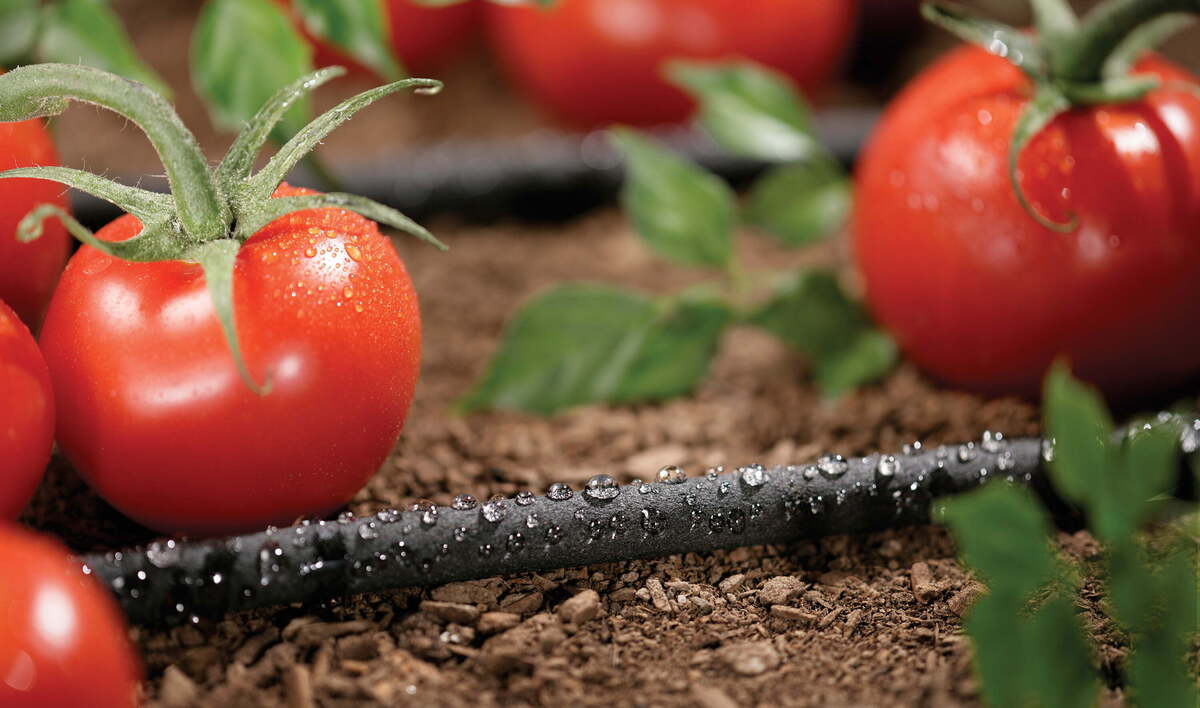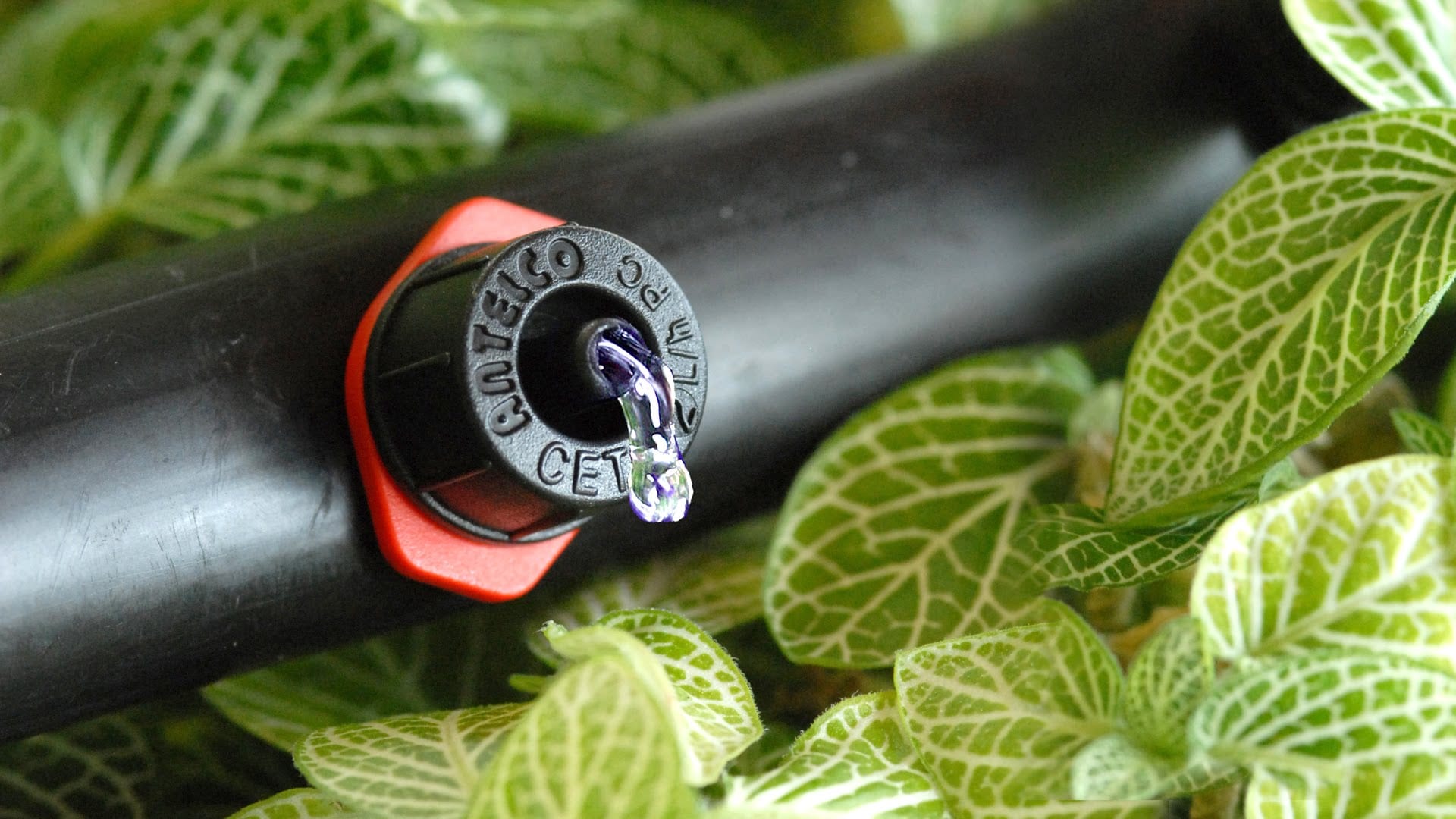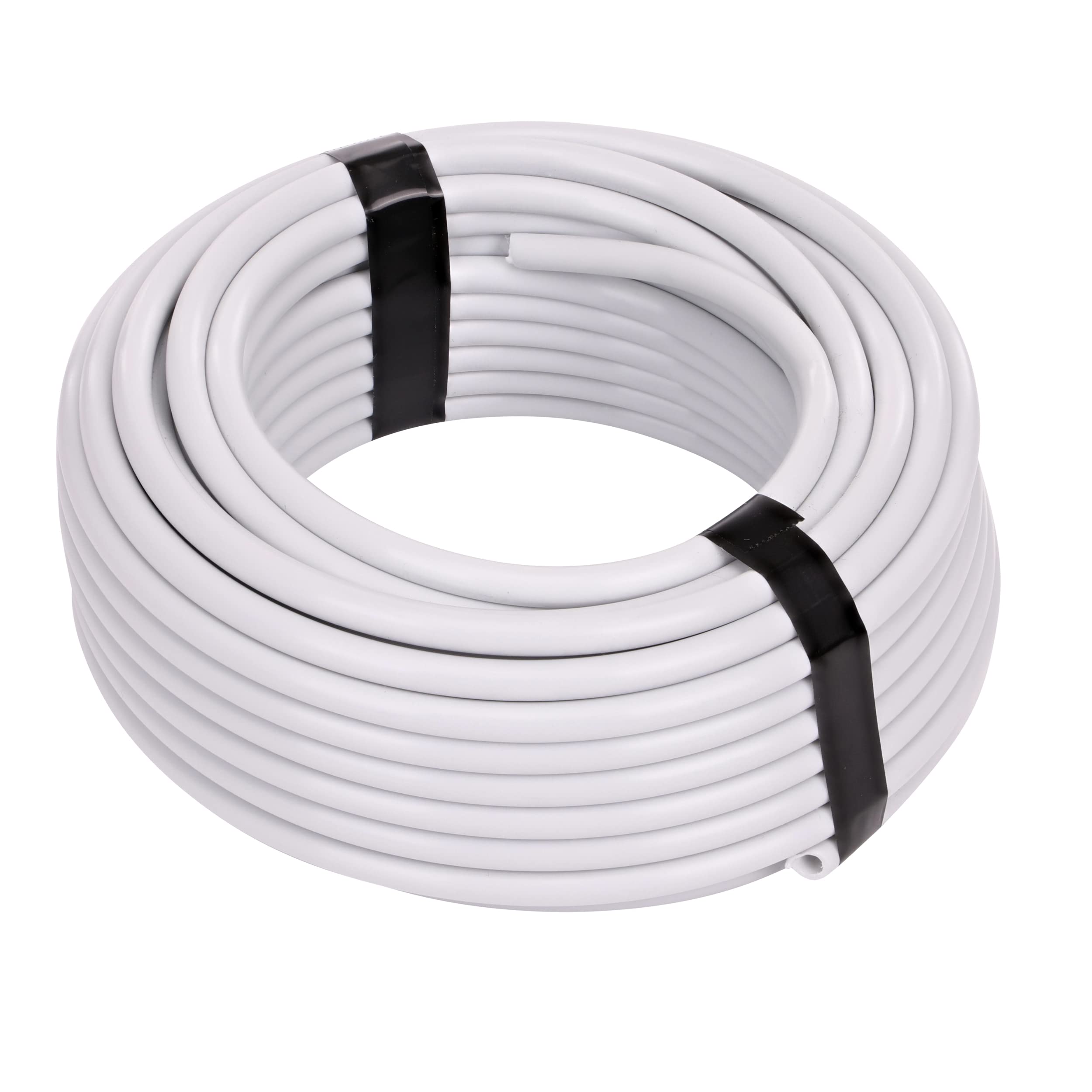Home>Gardening Basics>Tools and Equipment>What Are The Different Drip Irrigation Tubing Sizes


Tools and Equipment
What Are The Different Drip Irrigation Tubing Sizes
Modified: January 22, 2024
Find the perfect size tubing for your drip irrigation system with our wide selection of tools and equipment. Choose the right tubing for efficient and effective irrigation.
(Many of the links in this article redirect to a specific reviewed product. Your purchase of these products through affiliate links helps to generate commission for Chicagolandgardening.com, at no extra cost. Learn more)
Table of Contents
Introduction
Drip irrigation is a highly efficient watering system that delivers water directly to the root zone of plants, minimizing water waste and promoting healthy plant growth. One of the essential components of a drip irrigation system is the tubing, which plays a crucial role in transporting water from the source to the plants.
Choosing the right size tubing for drip irrigation is essential to ensure proper water flow and distribution throughout your garden or landscape. The size of the tubing determines the amount of water that can be delivered to each plant, affecting the efficiency and effectiveness of the system.
In this article, we will explore the various types of drip irrigation tubing available and discuss the factors to consider when choosing the appropriate size. Additionally, we will provide you with a guide on how to calculate the required tubing size for your specific needs and highlight the most common tubing sizes used in drip irrigation systems.
By the end of this article, you will have a comprehensive understanding of the different tubing options and be equipped with the knowledge to make an informed decision for your drip irrigation setup.
Types of Drip Irrigation Tubing
When it comes to drip irrigation tubing, there are two main types to choose from: polyethylene (PE) tubing and vinyl (PVC) tubing.
Polyethylene tubing, also known as “poly” tubing, is a flexible and durable option. It is available in different thicknesses and has excellent resistance to UV rays and chemicals. Poly tubing is commonly used in residential and small-scale drip irrigation systems due to its affordability and ease of installation. It can be easily cut to specific lengths and connected using various fittings.
Vinyl tubing, on the other hand, is a rigid and less flexible option. It is often used in commercial and agricultural drip irrigation systems as it can withstand higher water pressure. Vinyl tubing is available in different schedules, with higher schedules indicating thicker walls and higher pressure tolerance. Although more expensive than poly tubing, vinyl tubing offers durability and longevity.
Both polyethylene and vinyl tubing come in different diameters, typically ranging from 1/4 inch to 1 inch. The diameter of the tubing determines the flow rate of water and the maximum length of the tubing that can be used in a drip irrigation system.
It’s important to consider the specific requirements of your garden or landscape when choosing between polyethylene and vinyl tubing. Factors such as water pressure, system size, and budget should be taken into account to ensure optimal performance and longevity of your drip irrigation system.
Now that you understand the different types of drip irrigation tubing available, let’s move on to the factors to consider when choosing the appropriate size for your system.
Factors to Consider When Choosing Tubing Size
Choosing the right tubing size for your drip irrigation system is crucial to ensure optimal water flow and efficiency. Here are some factors to consider when selecting the appropriate tubing size:
- Water Flow: The flow of water through the tubing is determined by the diameter of the tubing. Smaller diameter tubing will have a lower flow rate, while larger diameter tubing can accommodate higher flow rates. Consider the specific water requirements of your plants and the flow rate you desire when selecting the tubing size.
- System Size: The size of your drip irrigation system plays a vital role in determining the tubing size. Larger systems generally require larger diameter tubing to distribute water evenly and efficiently. Smaller systems may be able to operate effectively with smaller diameter tubing, saving on costs.
- Water Pressure: The water pressure available in your system is another important factor to consider. Higher water pressure may require larger diameter tubing to handle the increased flow rate without causing excessive pressure loss. Conversely, if your water pressure is low, smaller diameter tubing may be sufficient.
- Tubing Length: The length of the tubing required to cover your garden or landscape is another consideration. Longer lengths of tubing can result in a loss of water pressure and flow rate. It’s important to choose a tubing size that can deliver sufficient water to the farthest point of your system without compromising effectiveness.
- System Layout: The layout and configuration of your drip irrigation system should also be considered when selecting the tubing size. If you have complex or intricate layouts with multiple branches and connections, larger diameter tubing may be necessary to ensure consistent water flow and distribution.
- Budget: Finally, your budget will also play a role in determining the tubing size. Larger diameter tubing is generally more expensive than smaller diameter tubing. Consider the cost implications and balance them with the other factors to make an informed decision.
By taking into account these factors and considering the specific needs of your drip irrigation system, you will be able to choose the appropriate tubing size for optimal performance and efficiency.
Calculating the Required Tubing Size
Calculating the required tubing size for your drip irrigation system involves considering the specific flow rate and water requirements of your plants, as well as the length and layout of your system. Here’s a step-by-step guide on how to calculate the required tubing size:
- Determine the Flow Rate: Start by determining the flow rate required for each plant in your system. This can be done by considering factors such as the water needs of the plant and the number of plants in a particular zone.
- Calculate Total Flow Rate: Once you have determined the flow rate for each plant, calculate the total flow rate for your entire system by adding up the individual flow rates.
- Determine the Maximum Run Length: Determine the furthest distance from your water source to the farthest point in your system. This will be the maximum run length, and it will help you determine the pressure and flow rate limitations of your tubing.
- Check Pressure and Flow Rate Charts: Consult the pressure and flow rate charts provided by the manufacturer for the tubing options you are considering. These charts will give you the maximum recommended flow rate for various tubing sizes.
- Choose the Appropriate Tubing Size: Based on the total flow rate calculated and the maximum recommended flow rates from the charts, choose the tubing size that can comfortably handle the required flow rate for your system.
- Consider Pressure Loss: Keep in mind that longer lengths of tubing can result in some pressure loss. If you have a particularly long run, you may need to opt for a larger diameter tubing to compensate for the pressure loss and ensure adequate flow rate at the farthest point of your system.
By following these steps and considering the specific flow rate and layout of your drip irrigation system, you will be able to accurately calculate the required tubing size for optimal water distribution and plant health.
Common Tubing Sizes for Drip Irrigation
When it comes to choosing the right tubing size for your drip irrigation system, there are several common sizes that are widely used. Here are some of the most common tubing sizes and their applications:
- 1/4 inch tubing: This is the smallest tubing size available for drip irrigation. It is commonly used for individual pots, containers, or small areas. 1/4 inch tubing is flexible and easy to work with, making it ideal for small-scale applications.
- 1/2 inch tubing: 1/2 inch tubing is a popular choice for small to medium-sized gardens. It offers a slightly higher flow rate compared to 1/4 inch tubing and can accommodate a larger number of plants. It is commonly used for vegetable gardens, flower beds, and landscaping projects.
- 3/4 inch tubing: 3/4 inch tubing is often used for larger gardens, commercial landscapes, and agricultural applications. It provides a higher flow rate and can handle longer runs without significant pressure loss. This size is ideal for irrigating larger areas with a high water demand.
- 1 inch tubing: 1 inch tubing is the largest size available for drip irrigation systems. It is primarily used for commercial agriculture, where large volumes of water need to be distributed. 1 inch tubing can handle high flow rates and long runs, making it suitable for extensive irrigation systems.
These common tubing sizes provide options for various applications and system sizes. It’s important to consider the specific needs of your plants and the size of your garden or landscape when selecting the tubing size.
Keep in mind that the tubing size you choose will impact the flow rate, pressure, and effectiveness of your drip irrigation system. A well-chosen tubing size will ensure that water is distributed evenly and efficiently to promote healthy plant growth.
Conclusion
Choosing the right tubing size is a critical aspect of creating a successful drip irrigation system. By considering factors such as water flow, system size, water pressure, tubing length, system layout, and budget, you can select the appropriate tubing size to meet the specific needs of your garden or landscape.
Understanding the various types of drip irrigation tubing, such as polyethylene and vinyl, allows you to make an informed decision based on durability, flexibility, and cost. Poly tubing is commonly used in residential and small-scale systems, while vinyl tubing is suitable for commercial and agricultural applications.
Calculating the required tubing size involves determining the flow rate of each plant, considering the total flow rate for your system, and checking pressure and flow rate charts to choose the appropriate tubing size. Factoring in pressure loss for longer runs ensures efficient water distribution to the farthest points of your system.
Common tubing sizes such as 1/4 inch, 1/2 inch, 3/4 inch, and 1 inch cater to a range of applications and system sizes. Selecting the right tubing size ensures proper water flow and distribution, promoting healthy plant growth.
In summary, choosing the correct tubing size for your drip irrigation system requires careful consideration of various factors. By taking into account the specific needs of your plants, the size of your system, and your budget, you can create an efficient and effective drip irrigation system that maximizes water conservation and promotes plant health.




